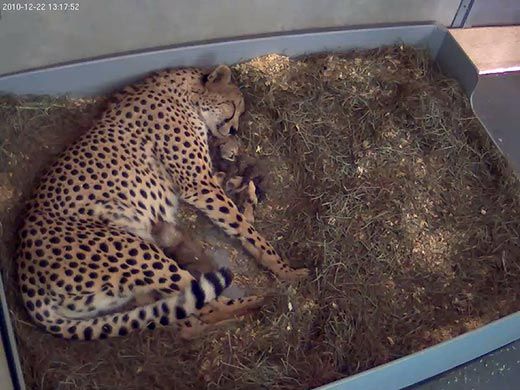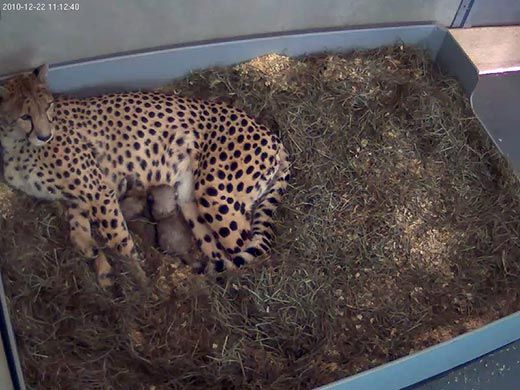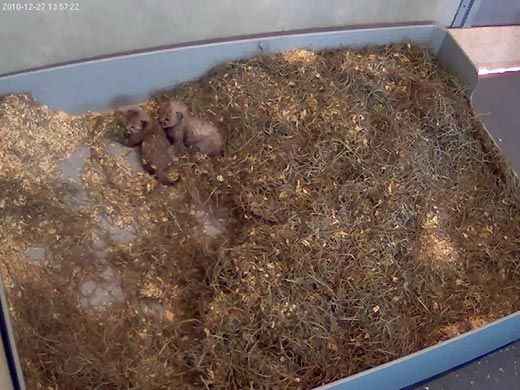Baby Cheetahs Bring Fruitful Year to a Close at the Zoo
Cheetah cubs join the list of new arrivals for 2010
The National Zoo has had a banner year for babies this year. Beginning with the birth of Andean bear cubs in January, we also saw the birth of strawberry tree frogs, kiwis, clouded leopards, a snake-necked turtle, white naped cranes, red pandas (who tragically died weeks later), veiled chameleons, an acouchi, red billed hornbills, Temminck's tragopans, onagers, ferrets, an anteater, and of course, lion cubs (and we sadly lost one cub earlier this spring.) And that's not including our almost pregnant panda Mei Xiang.
So it is fitting that in the closing month of the year, the Smithsonian Conservation Biology Institute out in Front Royal was graced with more to add to the list: two cheetah cubs. Amari, a 5-year-old cheetah, gave birth to one cub on December 6 and 9-year-old Zazi gave birth to another 10 days later. According to the Zoo, cheetahs that give birth to a litter of one cannot provide enough milk to keep the single cub alive. In an innovative maneuver, the biologists hand-raised Amari's cub until Zazi gave birth, and the litter of two cubs should be able to nurse from her.
The latest arrivals bring the total number of cheetahs under the Zoo's care (split between the Zoo and SCBI) to 13. While these as-of-yet unnamed cubs will stay at SCBI for close observation and care (cheetahs born in human care have a 20 percent mortality rate, as opposed to 70 percent in the wild in east Africa), check out the adorable photos of them below and stay tuned to this space in 2011 for what will hopefully be many more zooborn announcements.
/https://tf-cmsv2-smithsonianmag-media.s3.amazonaws.com/accounts/headshot/brian.png)





/https://tf-cmsv2-smithsonianmag-media.s3.amazonaws.com/accounts/headshot/brian.png)